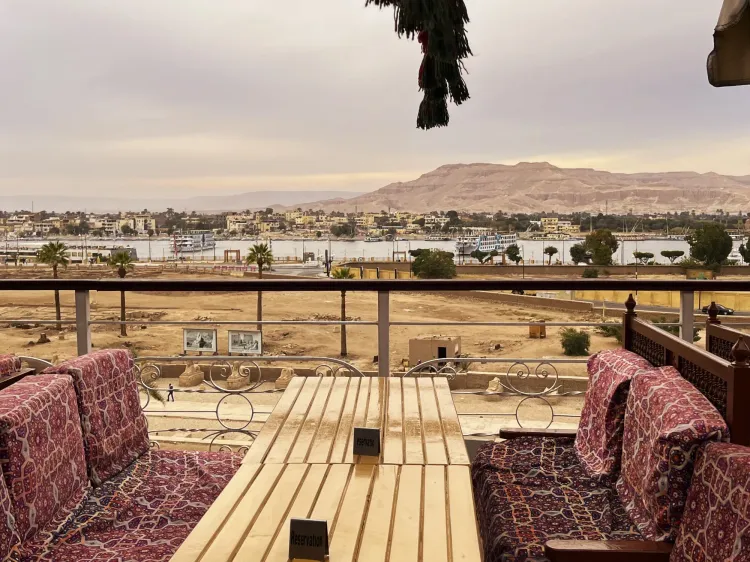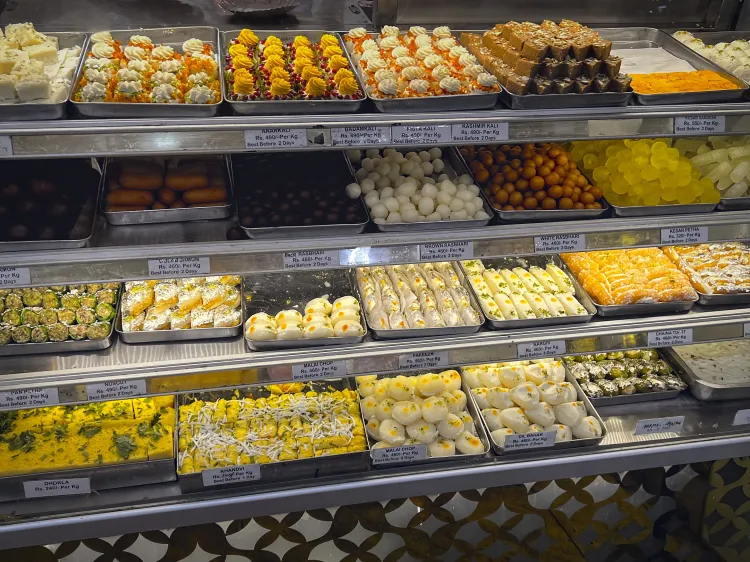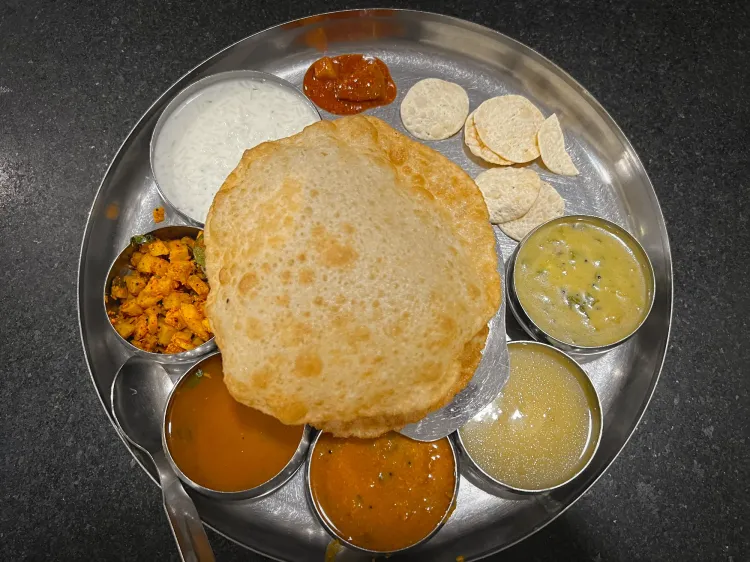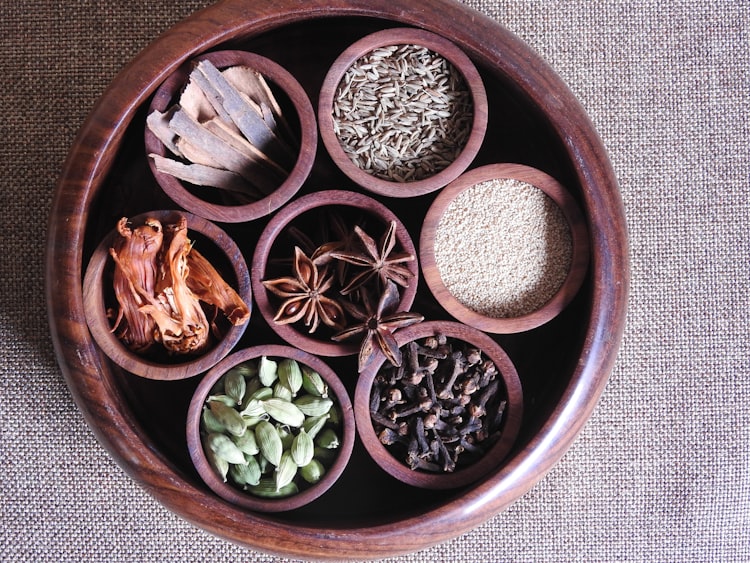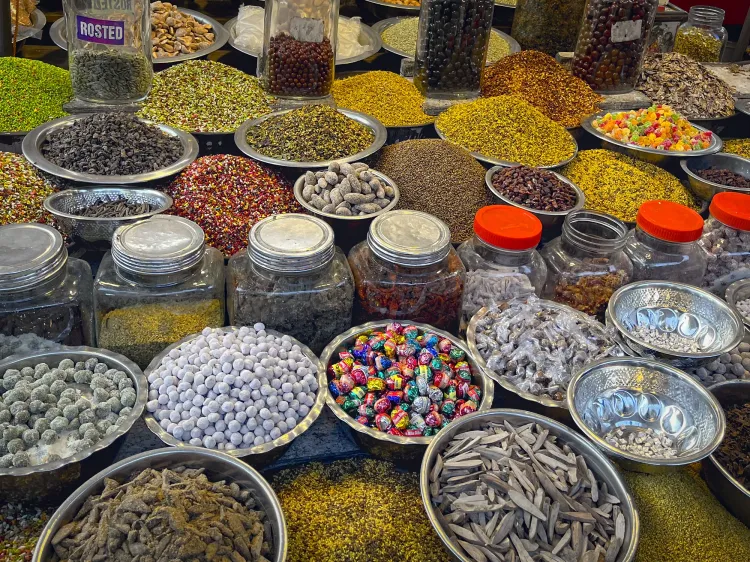Khaleeji / Gulf States Gastronomy (Emirati, Qatari, Kuwaiti, Bahraini, Omani)
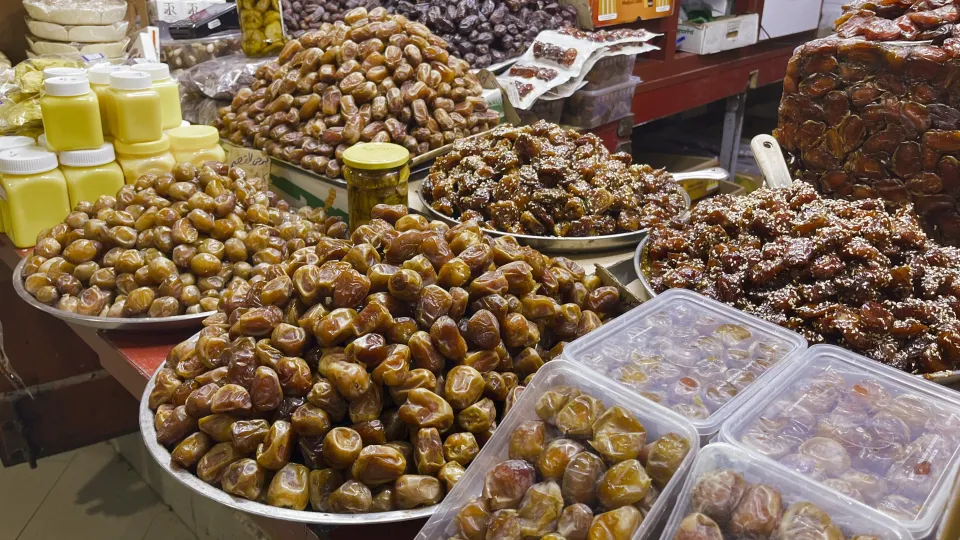
Kaleeji gastronomy, also known as Gulf cuisine, is a blend of traditional Arab, Indian, and Persian culinary influences that have evolved over centuries in the Gulf region. The cuisine is characterized by the use of aromatic spices, fresh herbs, and bold flavors, often combined with tender meats, seafood, and rice. The countries along the Gulf have recently amassed a huge amount of wealth and have been able to promote this lesser-known cuisine to new heights. In general, Kaleeji gastronomy is a rich and diverse cuisine that is a testament to the Gulf region's cultural heritage and traditions.
Culture and Geography
History
Kaleeji cuisine has a rich history and cultural origin that can be traced back to ancient times. The cuisine is influenced by the many cultures that have inhabited the Arabian Peninsula over the centuries, including Persians, Indians, and Africans.
Arab and Turkish influences can be seen in the use of spices like cumin, coriander, and cardamom, as well as in the preparation of meat dishes like shawarma, kebabs, and machbous. Indian influence is evident in the use of rice, lentils, and curry spices, as well as in the preparation of dishes like biryani and dal. Persian influence can be seen in the use of saffron, rosewater, and dried fruits.
The Bedouin tribes of the region were known for their simple diet consisting of dates, camel milk, and grilled meat, while the coastal regions relied heavily on seafood. With the advent of Islam in the 7th century, the culture of hospitality and sharing food became an integral part of society, leading to the creation of large communal dishes such as machbous and hareesa.
As trade routes expanded, new ingredients such as rice, citrus fruits, and coffee were introduced to the region, and the cuisine evolved accordingly. The use of charcoal grilling, clay ovens, and slow-cooking methods further enhanced the flavors of the dishes.
Today, Kaleeji cuisine continues to evolve and is appreciated by people all over the world. It represents a unique blend of history, culture, and geography that has resulted in a delicious and diverse culinary tradition.
1. Levantine cuisine: Lebanon, Syria, Jordan, and Palestine.
2. Persian cuisine: Iran and neighbors (Persian roots).
3. Turkish cuisine: Turkey (Ottoman roots).
4. Arabian Gulf cuisines: Khaleeji/Gulf cuisine + Saudi Arabia and Yemen.
5. North African cuisines: Morocco, Tunisia, Algeria, Libya, and Egypt.
[Note: Israeli cuisine is often included here as another category, or as a part of Levantine cuisine. Whether or not to include it is a highly controversial idea, one that I will leave up to the reader to investigate.]
Countries
Kaleeji cuisine, or Gulf cuisine, varies regionally based on geography, climate, and agriculture. The region's desert landscape has influenced the use of spices and preservation techniques, while its coastal location has resulted in a strong emphasis on seafood.
Instead of regions within a country, Kaleeji cuisine is used to describe multiple small countries' cuisines because of the major overlap in each nation's food. There are of course nuanced differences between the style and relative popularity of a given dish in each country, but the cuisine as a whole is shared throughout the geographical region.
The countries that fall under Kaleeji cuisine are the Gulf countries: United Arab Emirates (UAE), Qatar, Kuwait, Bahrain, and Oman. Additionally, the other Arabian Peninsula countries, Saudia Arabia and Yemen, have major overlap with the Kaleeji cuisine as they also derive from Bedouin tribes and had similar historical influences.
Countries
United Arab Emirates (UAE)
Qatar
Kuwait
Bahrain
Oman
[Yemen]
[Saudi Arabia]
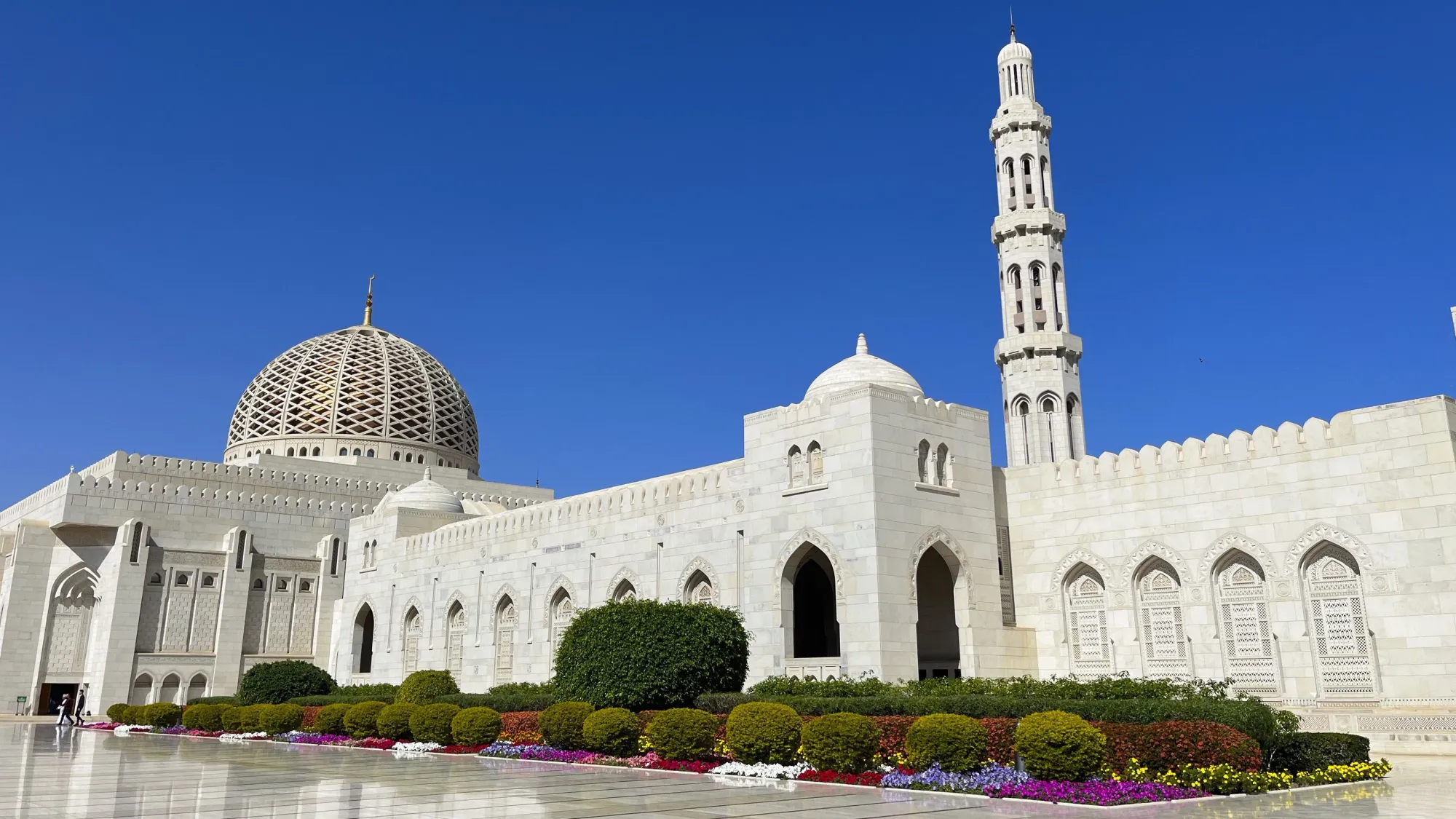
Ingredients
Kaleeji cuisine, also known as Gulf cuisine, is characterized by its rich and flavorful ingredients. The cuisine draws from a range of cultural influences, including Arab, Indian, and Persian, resulting in a unique blend of flavors and textures. Here is an overview of the key ingredients used in Kaleeji cuisine:
Vegetables/Fruits: Kaleeji cuisine incorporates a variety of vegetables, including eggplant, tomatoes, onions, okra, and potatoes. Dates are also a popular ingredient in the region and are used in both savory and sweet dishes.
Meats/Fish: Meat dishes are a staple in Kaleeji cuisine, with lamb and goat being the most commonly used meats (with beef and chicken also popular). Seafood, such as fish, shrimp, crab, and lobster, is abundant in the region and often used in dishes. Camel meat is also used in some traditional dishes.
Carbs: Rice is a staple in Gulf cuisine and is often flavored with an array of spices like saffron, cumin, and turmeric. Other carbs include bread, such as khubz and pita, as well as noodles and pasta.
Herbs/Spices: Aromatic spices like cumin, coriander, and cardamom are commonly used in Kaleeji cuisine, as well as cinnamon, cloves, and nutmeg. Fresh herbs like mint, parsley, and cilantro are also used in salads and as garnishes.
Condiments/Sauces: Sauces and condiments like hummus, tahini, and yogurt-based dips are popular in the region, as are spiced chutneys and pickles. Saffron and rosewater are also used as flavorings in sweet dishes.
Major Ingredients
Dates
Lamb
Goat
Camel
Rice
Flatbreads
Saffron
Rosewater
International Highlights
Machbous (Kabsa)
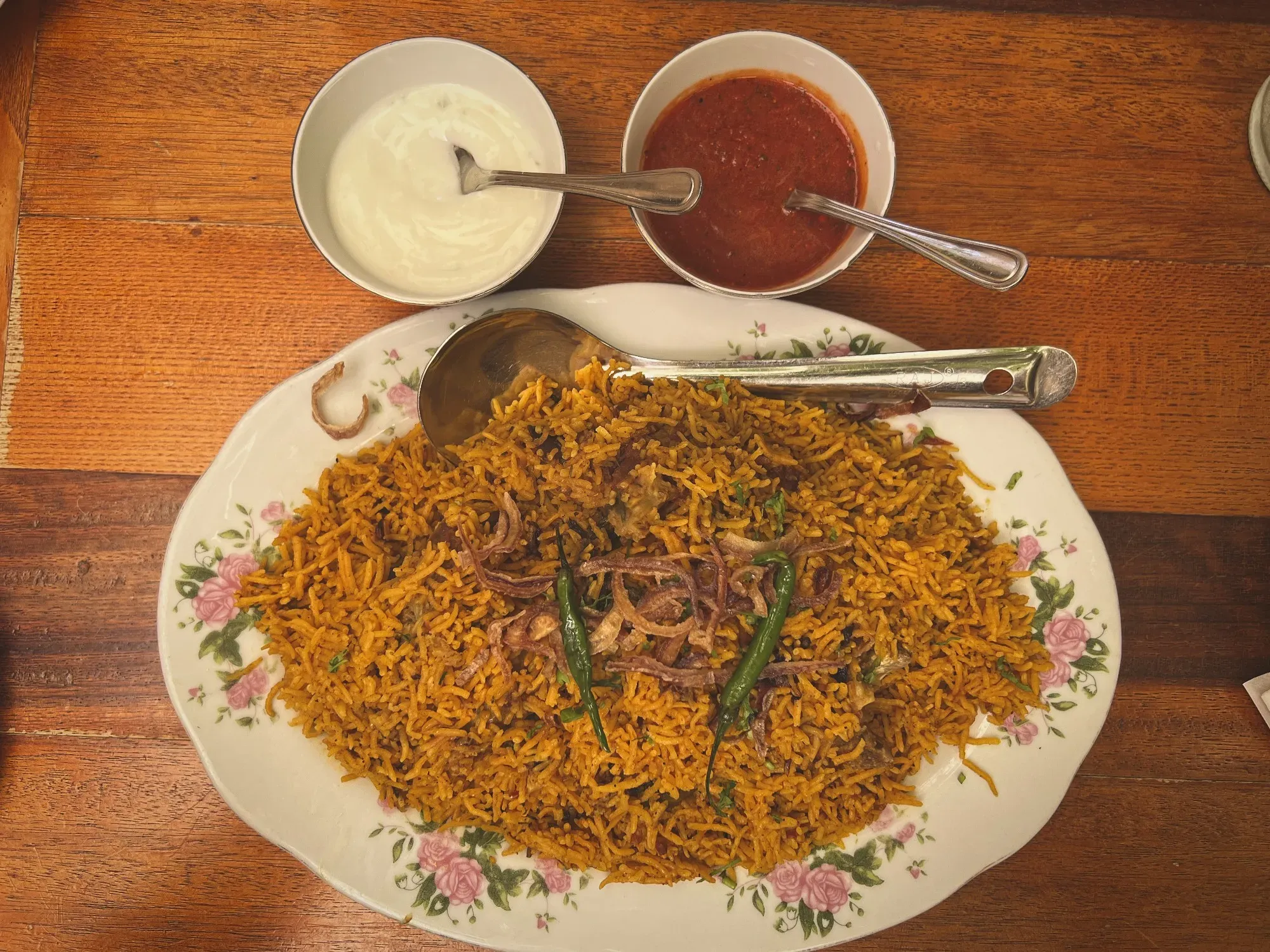
Machbous, also known as Kabsa, is a traditional rice dish that is popular throughout the Gulf region. The dish is typically made with long-grain rice, meat (usually chicken or lamb), and an array of aromatic spices, including saffron, cardamom, and cinnamon. The rice is often cooked with a stock made from the meat, as well as onions, tomatoes, and other vegetables.
Regional variations of Machbous can differ based on the inclusion of alternate meats (for example, camel meat is sometimes used), as well as the addition of other ingredients like dried limes or potatoes. In some regions, the dish is served with a tomato-based sauce, while in others it is served with a yogurt-based sauce.
Ouzi (Quzi)
Ouzi, also known as Quzi, is a traditional meat and rice dish that is popular throughout the Gulf region. The dish is believed to have originated in Bedouin cuisine, where it was traditionally prepared using a whole lamb or goat that was slow-cooked in a pit in the ground. The meat is typically seasoned with a blend of spices like cinnamon, cardamom, and black pepper, and served over a bed of fragrant long-grain rice. Regional variations of Ouzi can include the type of meat used, as well as the addition of other ingredients like nuts or dried fruits.
Lugaimat (Luqaimat)
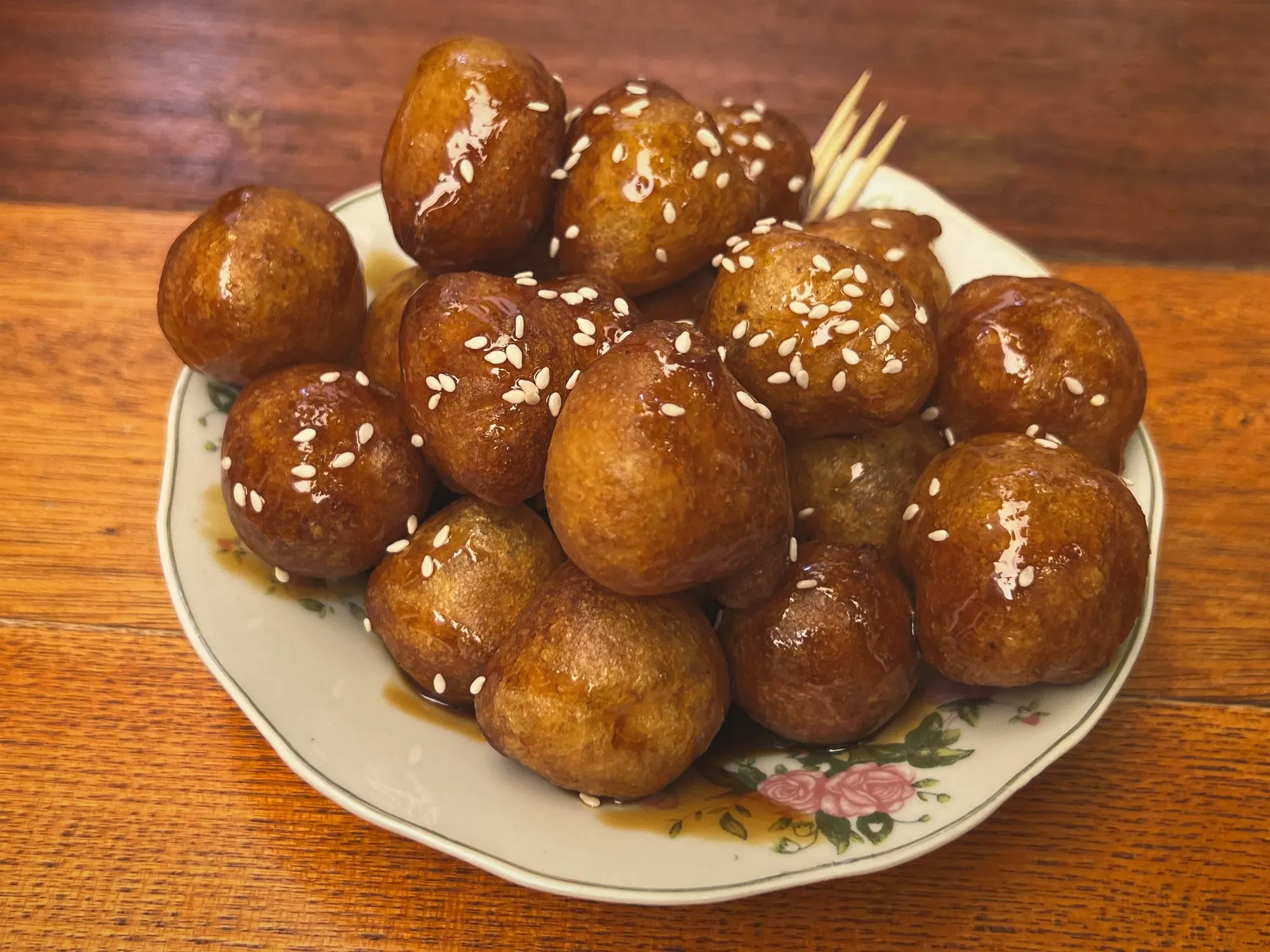
Lugaimat, also known as Luqaimat, is a popular dessert in the Gulf region that is believed to have originated in the UAE. The dish consists of small, doughnut-like balls made from a simple batter of flour, sugar, yeast, and water, which are then deep-fried until golden brown and crispy. Lugaimat is often served drizzled with sweet syrup or honey and dusted with powdered sugar or sesame seeds.
Regional variations of Lugaimat can include the addition of other ingredients, such as saffron, rosewater, or cardamom, which are added to the batter to give the dessert a unique flavor. Some regions may also serve Lugaimat with toppings like chocolate or cream, or with a side of Arabic coffee. Lugaimat is a popular dessert during Ramadan, as well as for special occasions and celebrations, and it is often served alongside other traditional sweets and desserts.
Omani Halwa
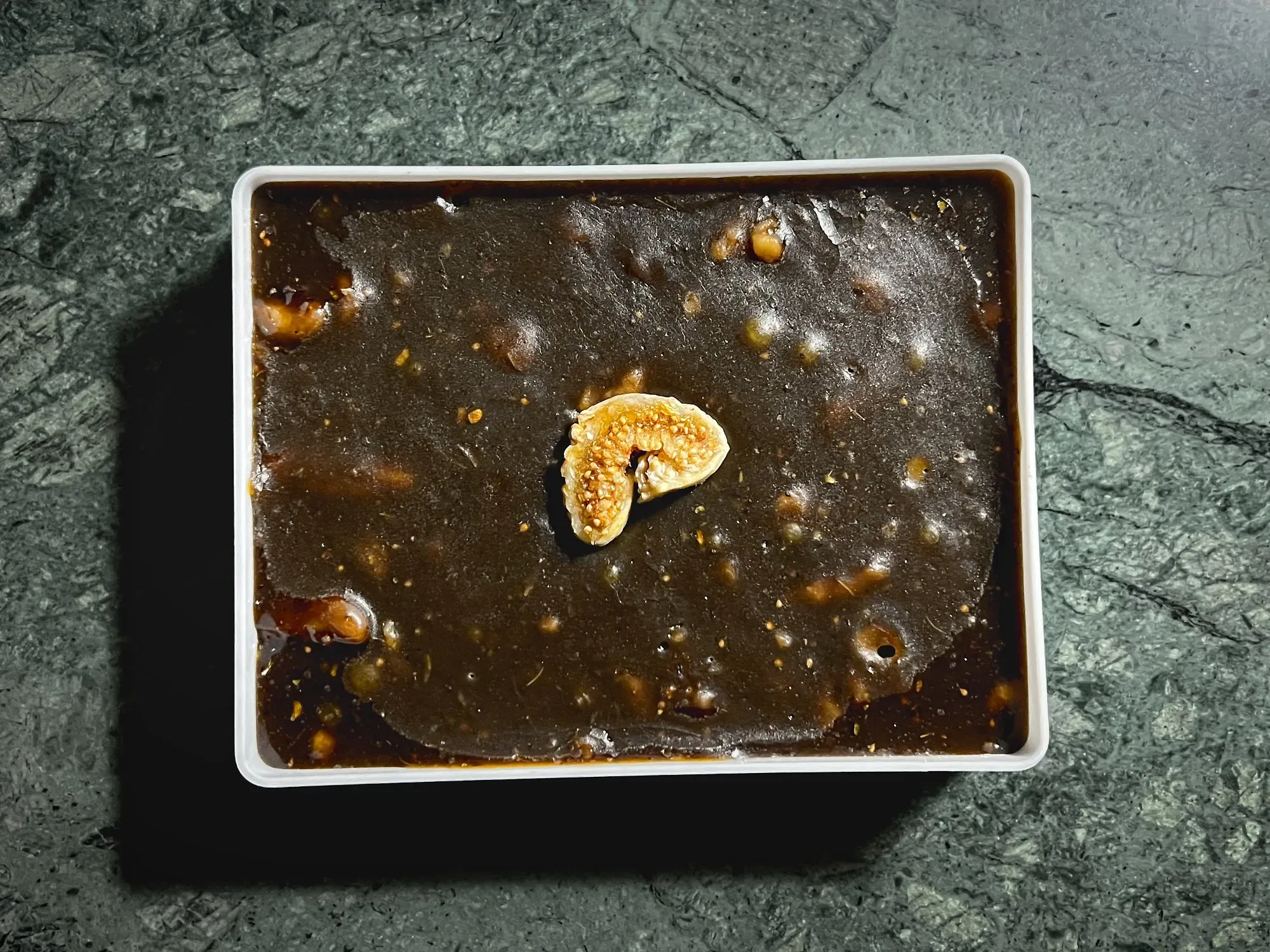
Omani Halwa is a traditional sweet dish that is an integral part of Omani cuisine. It has a rich history that dates back to ancient times when it was made from dates, honey, and wheat flour. Over the years, the recipe has evolved, and today, it is made from a combination of sugar, cornstarch, and ghee.
The dish is popular in the Gulf region, and Omani Halwa has become a symbol of Omani hospitality and is often served to guests. Broadly, Halwa is a popular type of sweet originating from Turkey, and today also synonymous with many Indian sweets. What sets Omani Halwa apart from other halwa varieties is its unique flavor and texture. It is usually flavored with cardamom and saffron, which gives it a distinct aroma and taste. Other ingredients such as nuts, rosewater, and honey may also be added to enhance the flavor.
In Oman, there are several varieties of halwa available, each with its own unique flavor and texture. Some of the most popular varieties include saffron halwa, date halwa, and almond halwa. Omani Halwa is also exported to other countries and is becoming increasingly popular around the world.
Regional-Specific Shoutouts
Madrouba / Madroob
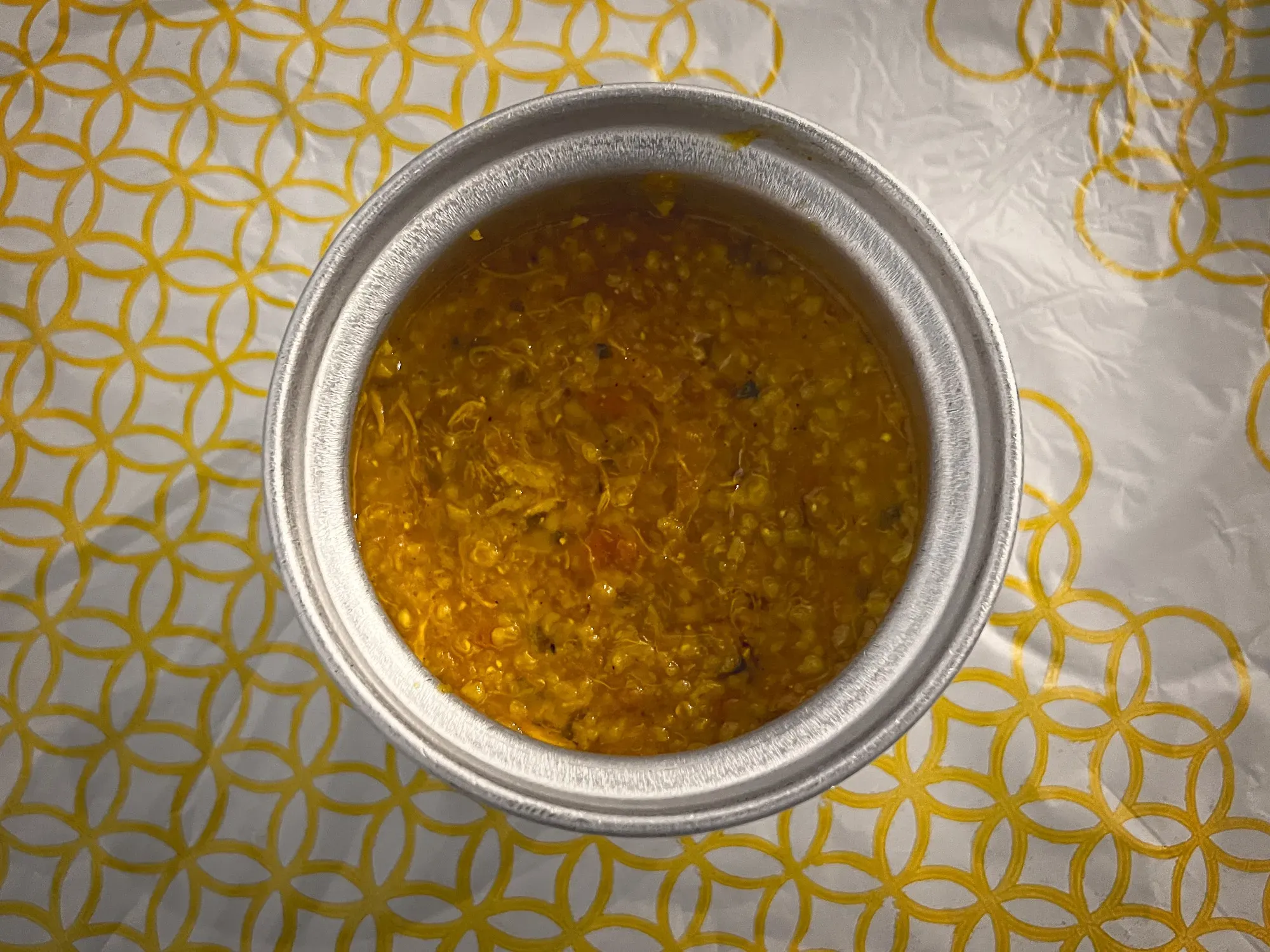
Madrouba is a traditional dish from the Gulf region. The dish consists of mashed wheat, cooked with meat (usually lamb or chicken), onions, and a blend of spices such as cumin, turmeric, and cinnamon. The mixture is then cooked until it becomes thick and creamy.
Madrouba is believed to have originated in the Bedouin culture, where it was a staple dish that was often served to guests. Regional variations of Madrouba can include the addition of other ingredients, such as tomatoes or yogurt, which are added to give the dish a tangy flavor.
Thareed
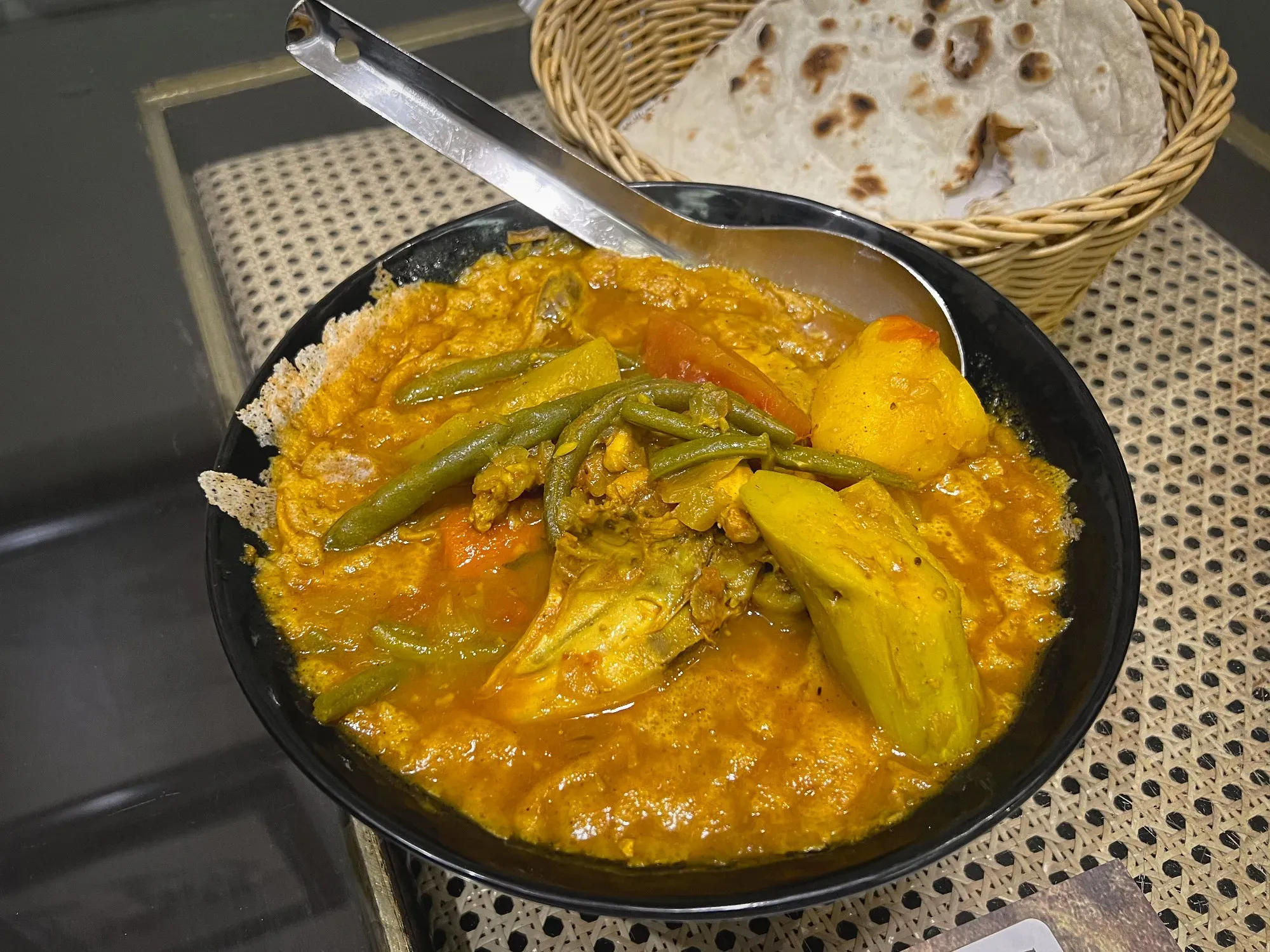
Thareed is a popular traditional dish in the Gulf region. It consists of bread that is torn into pieces and then soaked in a flavorful broth or stew made with meat, vegetables, and spices. The dish is typically served hot and is enjoyed as a main course during Ramadan or other special occasions.
Regional variations of Thareed can include different types of bread and spices, depending on the local cuisine. Some regions may use flatbread or pita bread, while others may use a type of bread called regag (see below). Thareed can also be made with different types of meat, such as lamb or chicken, and can be seasoned with a variety of spices such as cumin, coriander, and turmeric.
Hareesa / Jareesh / Al Aursya
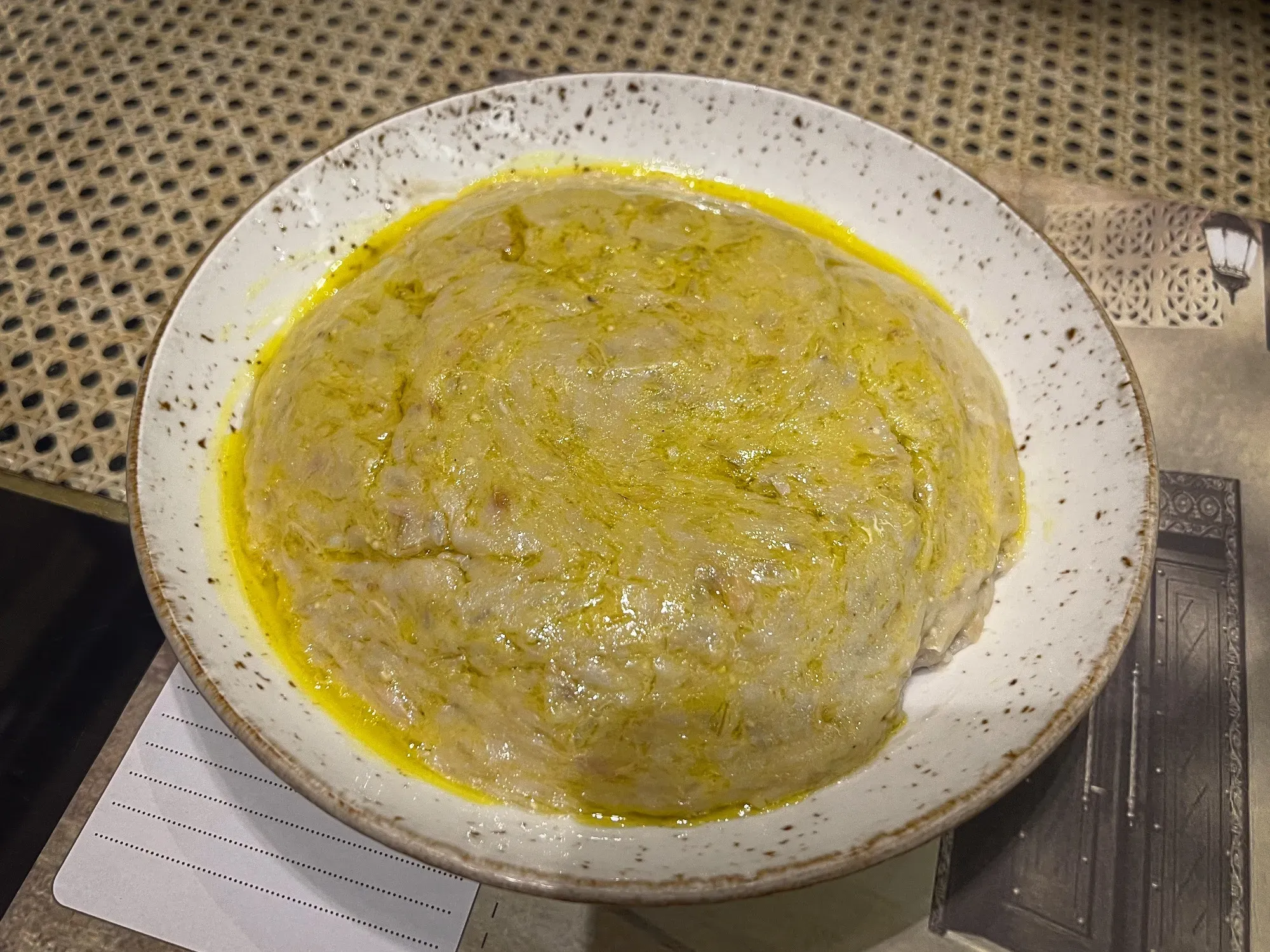
Hareesa, also called Jareesh, is a traditional dish from the Gulf region. The dish consists of crushed or coarsely ground wheat cooked with meat (usually lamb or chicken), onions, and a blend of spices such as cumin, cinnamon, and cardamom. The mixture is then cooked for several hours until it becomes thick and creamy, with a texture similar to porridge.
Hareesa is believed to have originated in the Bedouin culture, where it was traditionally prepared during Ramadan as a nutritious and filling meal to break the fast. Regional variations of Hareesa can include the addition of other ingredients, such as garlic or ginger, which are added to give the dish a unique flavor.
Al Aursya is a similar dish to Hareesa, the difference being rice, instead of wheat, is used as a base to be cooked with the meat (usually chicken). Al Aursya dish is usually considered Omani-specific.
Salona (Saloona)
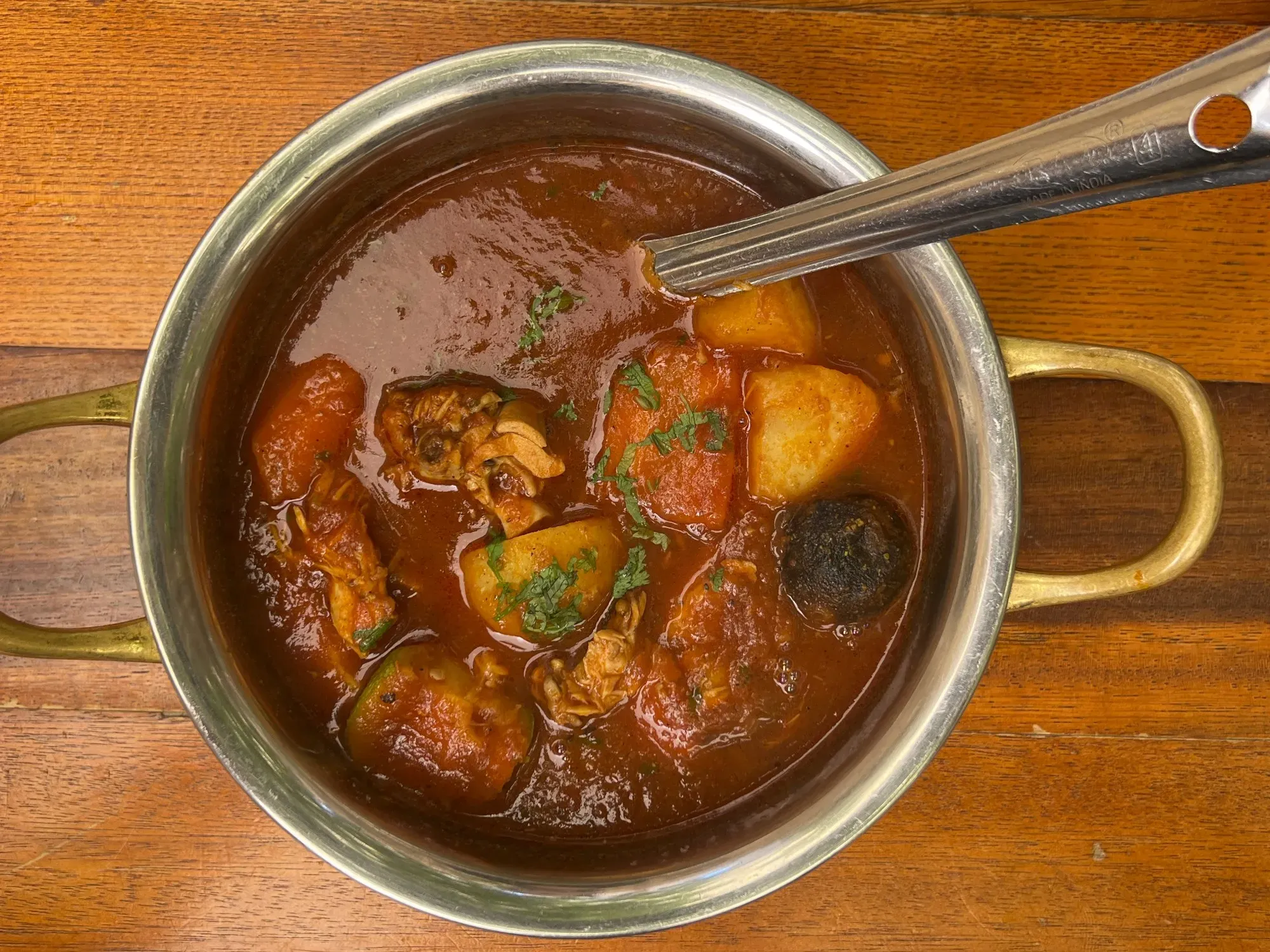
Salona is a flavorful stew that is a popular dish in the Gulf region. It is typically made with chicken, lamb, or fish, along with a variety of vegetables, such as onions, tomatoes, and carrots.
The stew is seasoned with a blend of spices, including turmeric, cinnamon, and cumin, which gives it a warm and fragrant flavor. The dish is usually served with rice and a side of bread, such as regag or naan. Its warming and aromatic spices make it a perfect meal for colder weather or for sharing with family and friends.
Balaleet
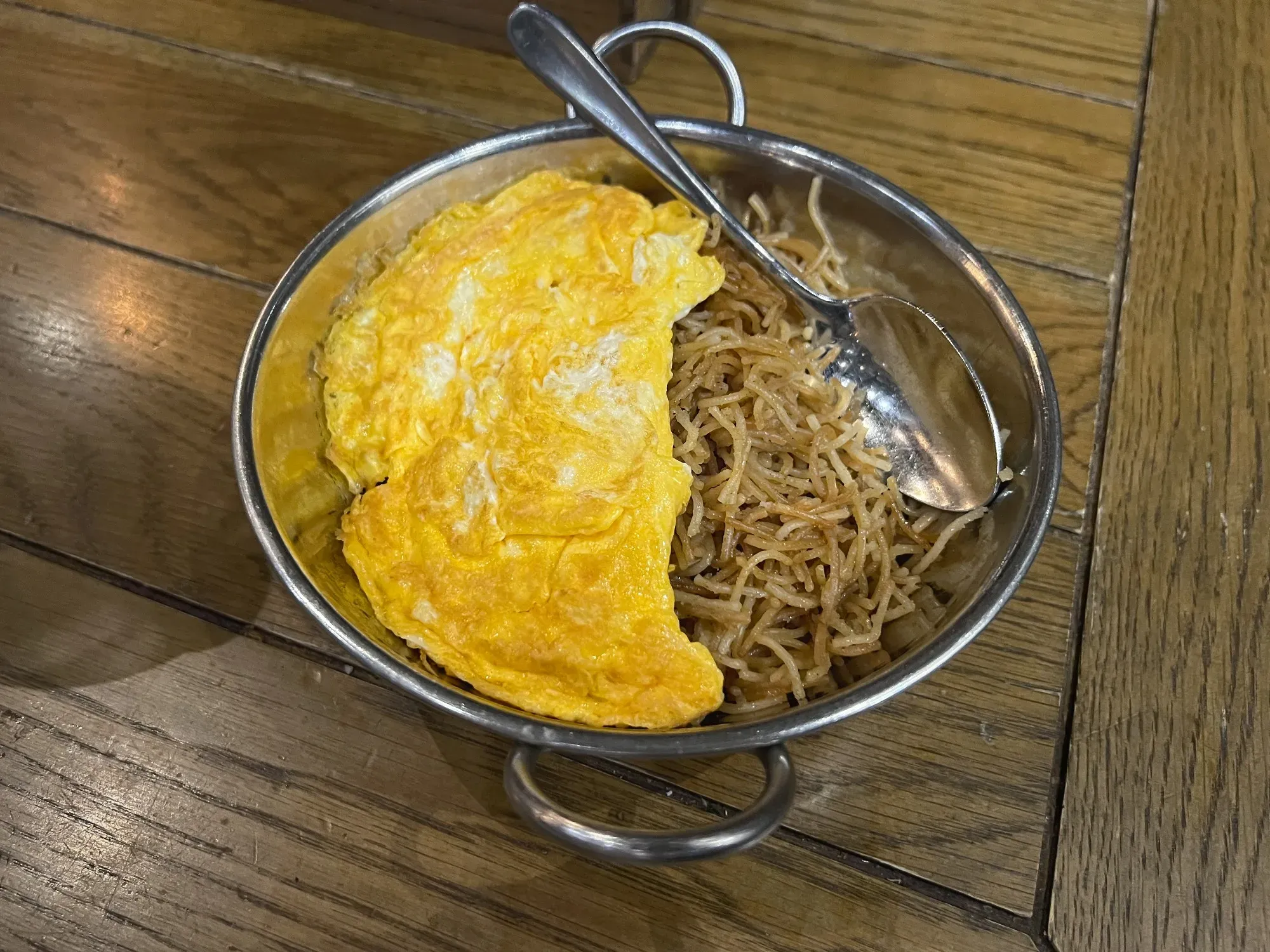
Balaleet is a traditional sweet dish from the Gulf region. The dish consists of vermicelli noodles that are cooked in a mixture of eggs, sugar, and rose water. The noodles are then topped with a layer of fried onions and cardamom for a sweet and savory flavor.
Balaleet is believed to have originated in Oman, where it is often served as a breakfast or dessert dish. Regional variations of Balaleet can include the addition of other ingredients, such as saffron or cinnamon, which are added to give the dish a unique flavor. Balaleet is a delicious and fragrant dish that is enjoyed by many in the Gulf region.
Margoog
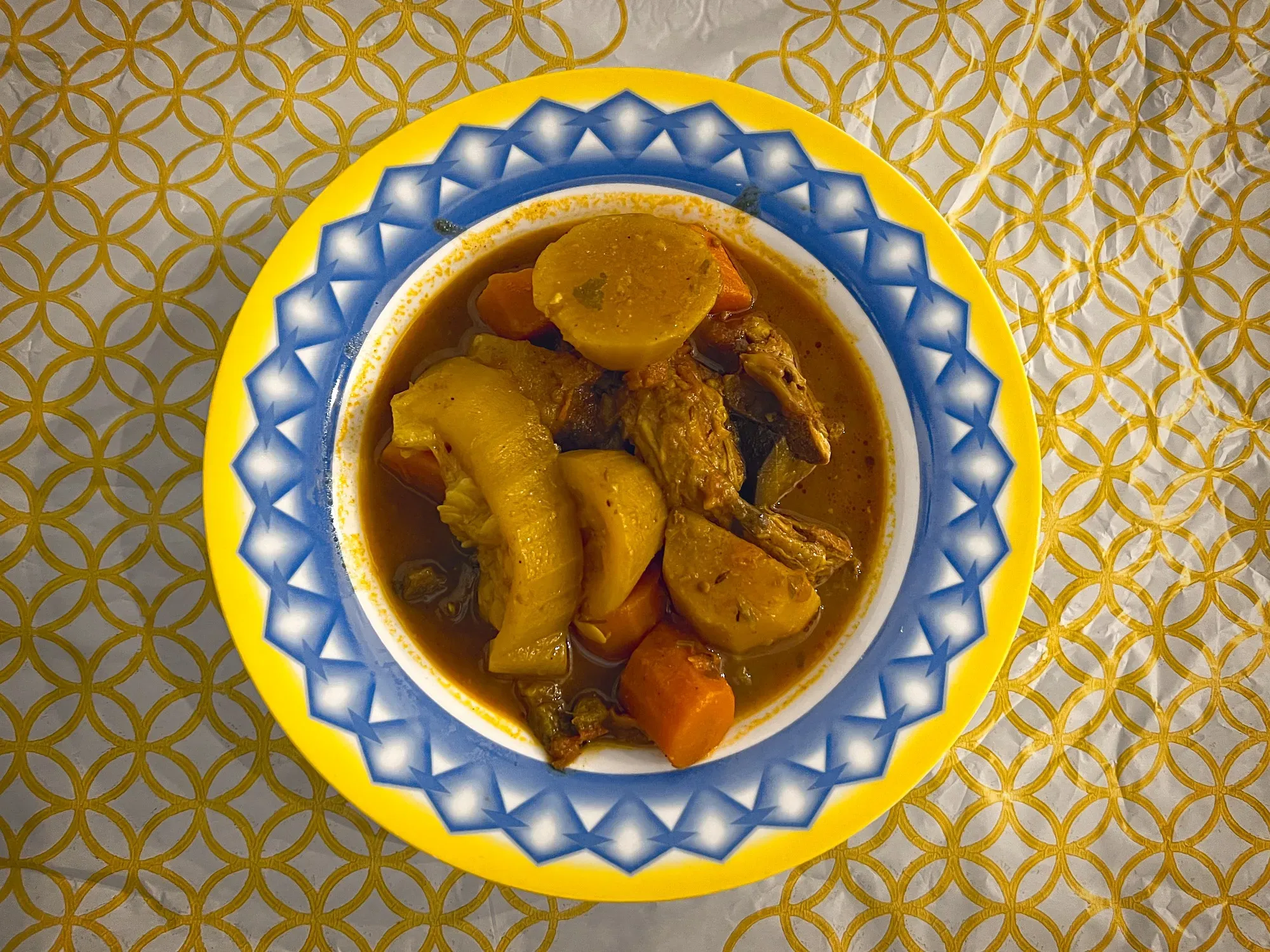
Margoog is a traditional stew that is popular in the Gulf region. The dish is typically made with lamb or chicken, which is cooked with a variety of vegetables such as onions, tomatoes, potatoes, and squash. The stew is seasoned with a blend of aromatic spices, such as cumin, coriander, and turmeric, giving it a rich and flavorful taste. Margoog is often served with bread or rice. Regional variations of the dish may include the addition of other ingredients, such as chickpeas or lentils, or may use different spices to create a unique flavor.
Mutabbaq Samak / Samak Mashwi et al.
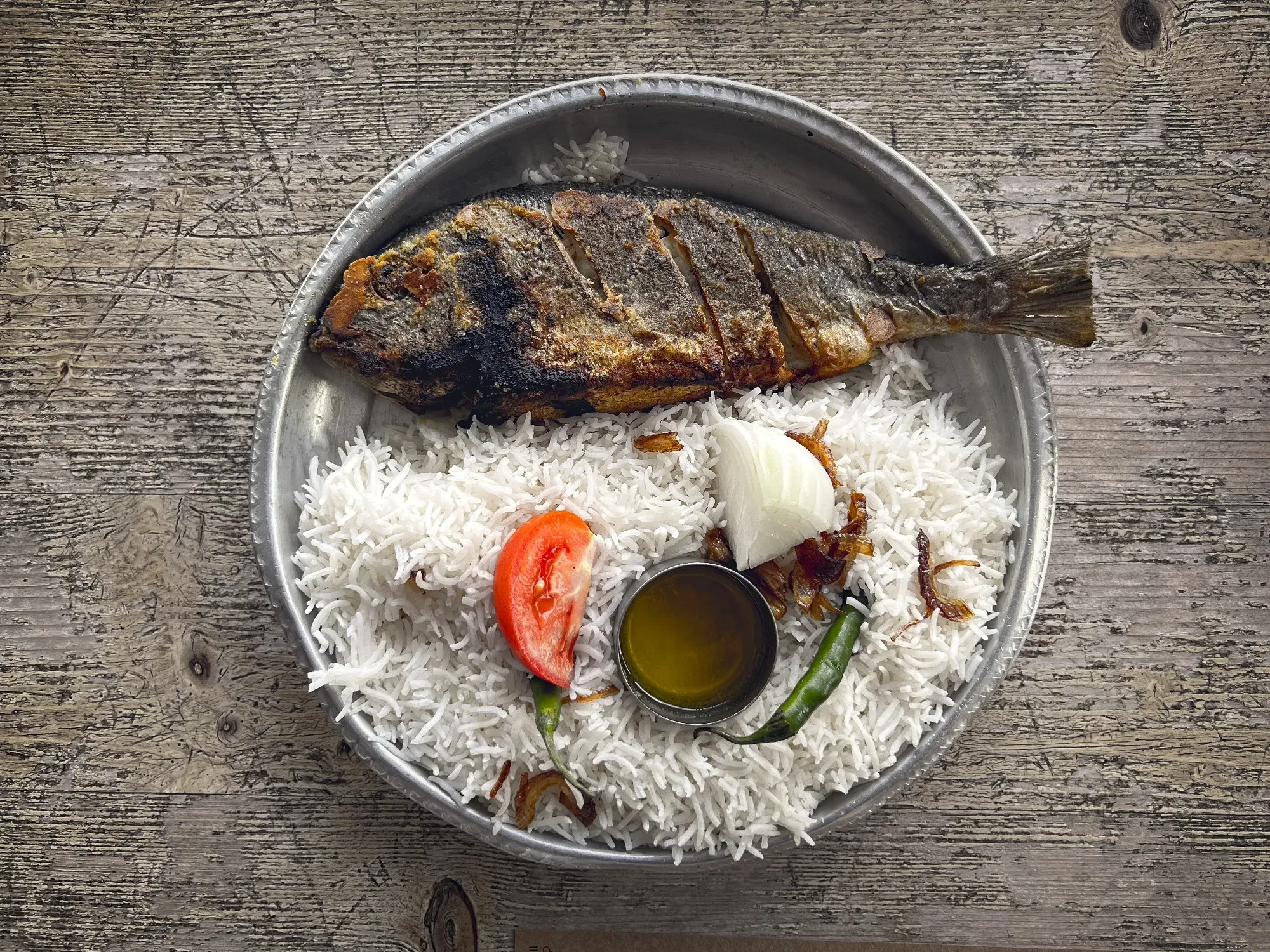
Mutabbaq Samak is a popular seafood dish in the Gulf countries. Mutabbaq Samak translates to "layered fish" and is essentially spiced fried fish over caramelized onions and rice. Similarly, Samak Mashwi (Semach Mashway) translates to "grilled fish" and is essentially a marinated whole fish grilled over hot coals. Egypt is typically credited as the origin of Samak Mashwi, but here we are using the dish as a representative for a family of grilled fish dishes popular in the Khaleeji cuisine (all have different names for the type of fish used). Both Mutabbaq Samak and Samak Mashwi are served with a side of tangy tamarind sauce or a squeeze of fresh lemon juice. These dishes are a staple of traditional coastal cuisine and are usually enjoyed as a light lunch or snack.
Regional variations of Mutabbaq Samak or Samak Mashwi can include different types of fish, such as hamour, snapper, or kingfish, depending on local availability and cuisine. The dish is often served atop rice with traditional sides such as salad and bread.
Murabyan
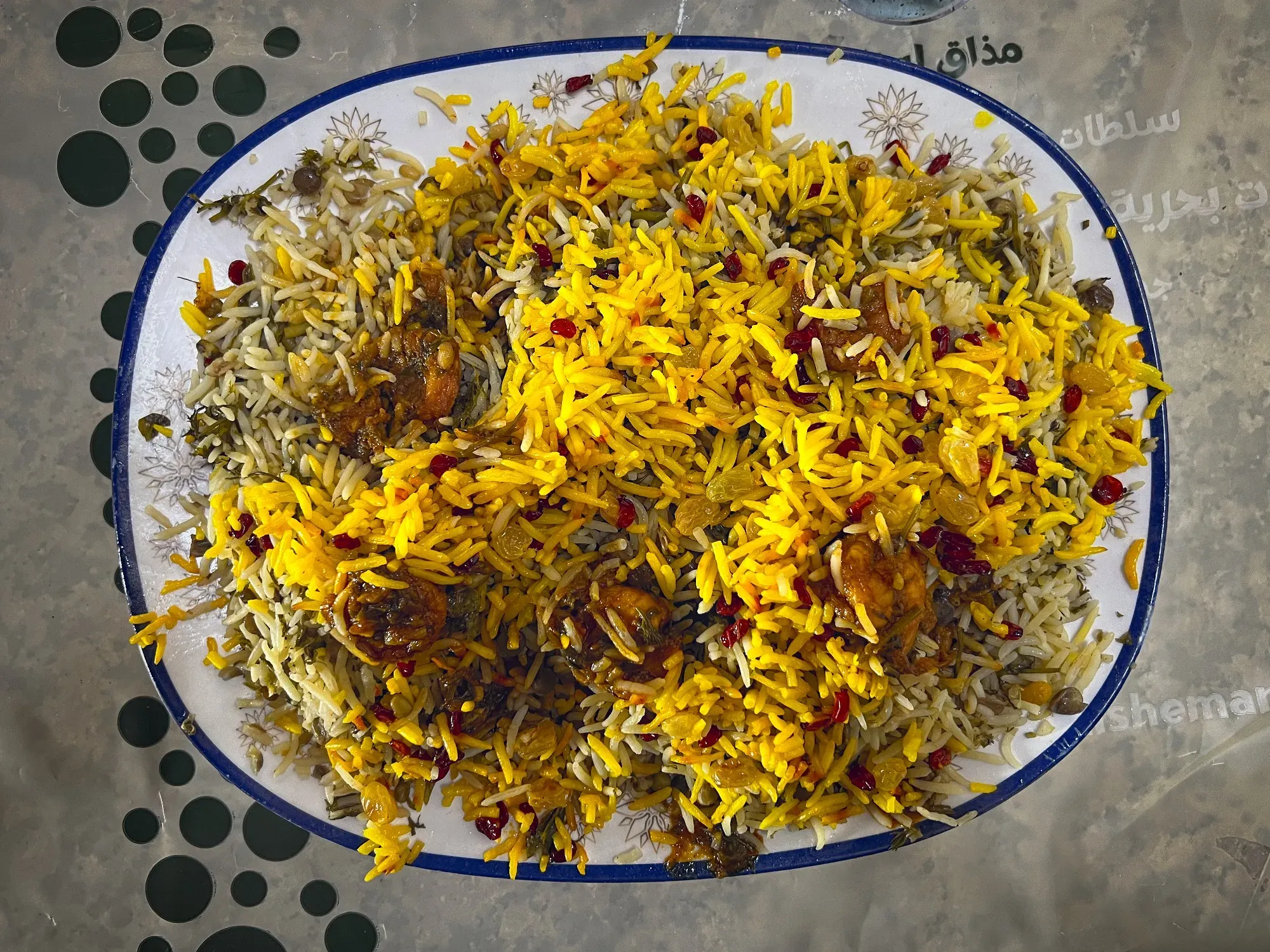
Kuwaiti Murabyan, sometimes called a variation of Mumawash, Mawash, or Emmawash (which have entirely different meanings in the Levantine region), is made by cooking rice with a variety of aromatic spices such as cinnamon, cardamom, and cloves, which give it a distinctive flavor and aroma. Shrimp is then added to the rice along with onions, garlic, and other vegetables, and the mixture is cooked until the shrimp are tender and fully cooked. The dish is simple to prepare and can be easily adapted to suit different tastes and preferences. Some variations of the dish may include the addition of raisins, nuts, or other ingredients to give it a unique twist. I absolutely loved this dish and cannot recommend it enough.
Shuwa
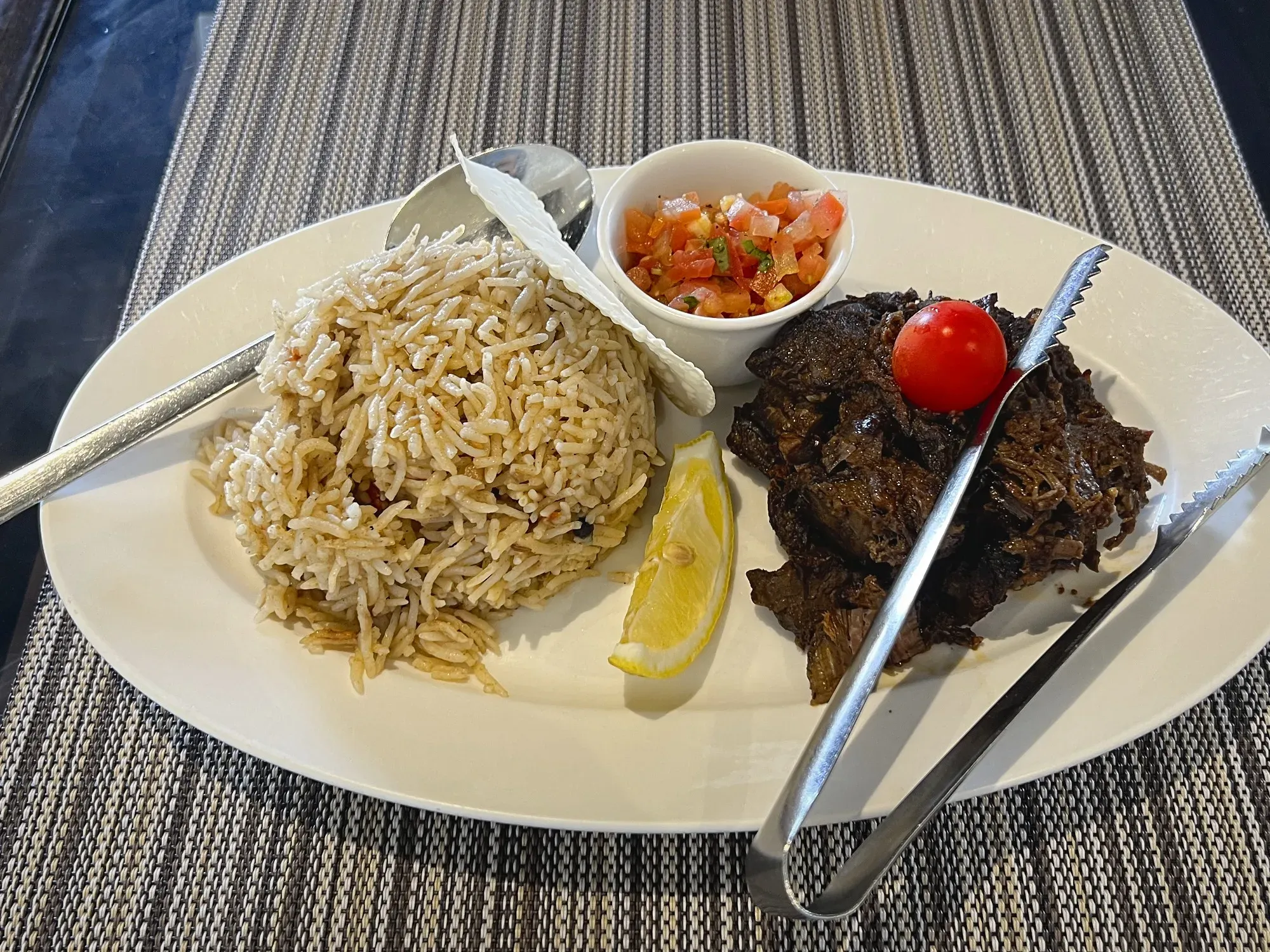
Shuwa is a traditional meat dish from the Arabian Peninsula, most popularly as the national dish of Oman. It is prepared by marinating large cuts of meat, usually lamb or goat, in a mixture of spices and then slowly cooked in an underground oven or pit for several hours. The meat is wrapped in banana or palm leaves to enhance the flavor and tenderness. Shuwa is a celebratory dish and is typically served during weddings, festivals, and other important events.
The cooking process of shuwa is time-consuming and labor-intensive, requiring several hours of preparation and cooking. However, the result is a flavorful and tender meat that falls off the bone. The spices used in the marinade may vary depending on the region but typically include cumin, coriander, turmeric, cinnamon, and black pepper. The dish is often served with rice or flatbread and accompanied by a range of side dishes such as salad, pickles, and chutneys.
Samboosa
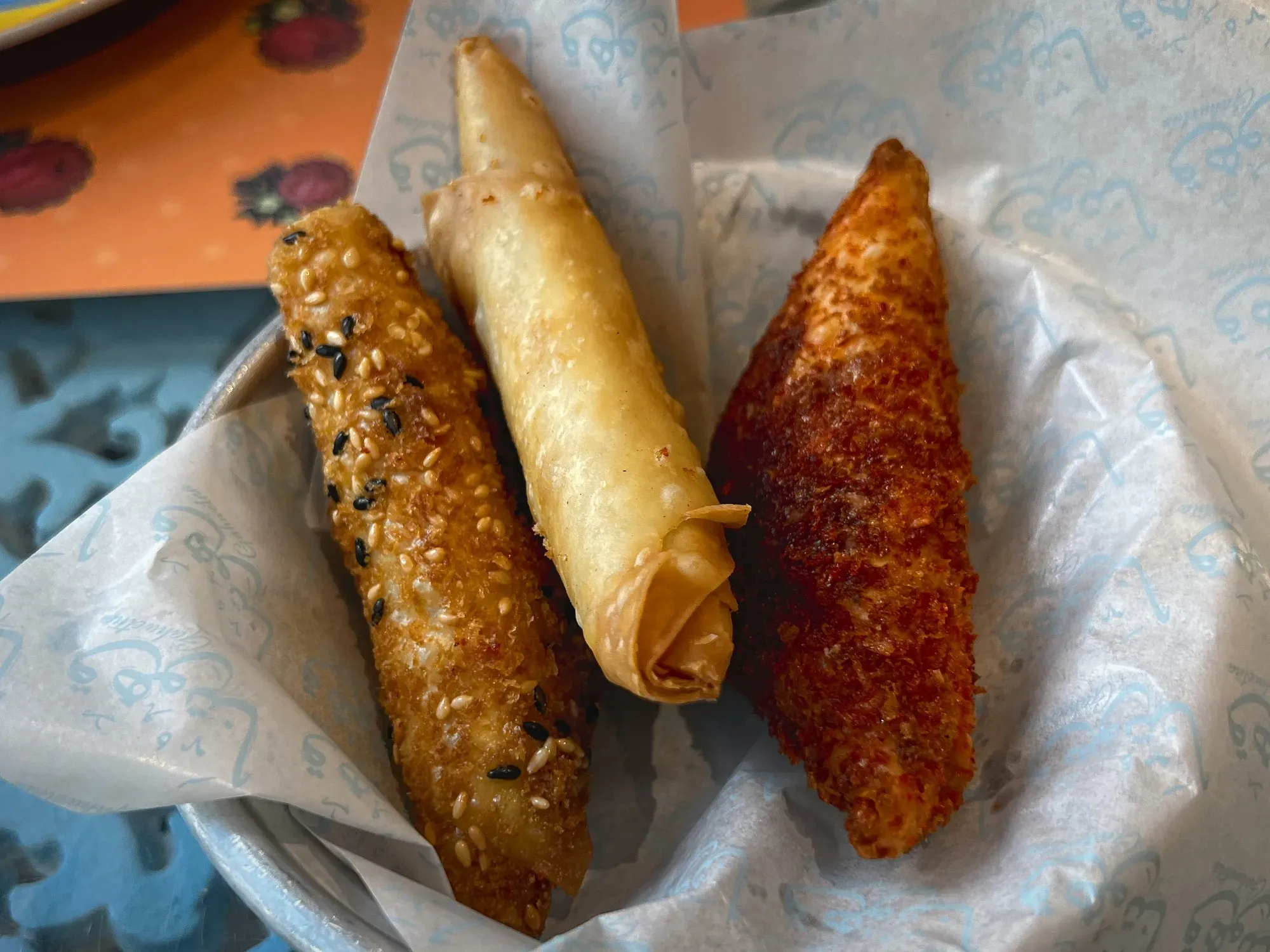
Samboosa is a popular appetizer in many Middle Eastern countries that is akin to Indian samosas. It is a triangular-shaped pastry filled with savory ingredients, typically meat, onions, and spices. The pastry shell is made of thin layers of phyllo dough or a similar pastry and is fried or baked until golden brown and crispy. Samboosas can also be filled with cheese, vegetables, or even sweet ingredients like dates or nuts. They are often served as a snack or appetizer during gatherings and celebrations and are considered a staple in the region's cuisine. Samboosas can be found in street markets, cafes, and restaurants.
Asida (Aseeda)
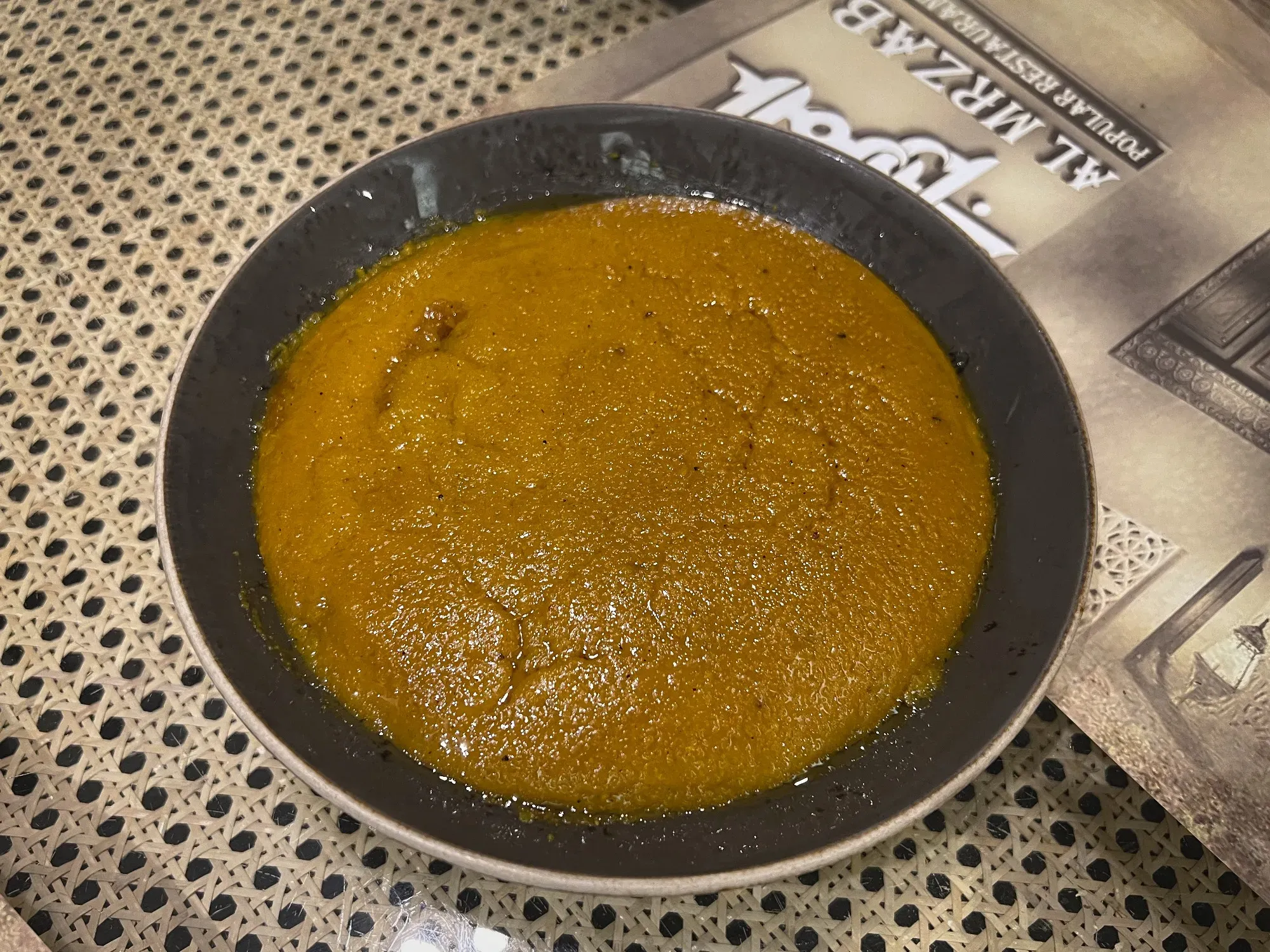
Asida, also known as Aseeda, is a traditional dish that is popular in the Arabian Gulf region. It is made by cooking flour and water together until it forms a dense and smooth paste. Asida can be served sweet or savory. It is often flavored with spices such as cardamom or saffron for a touch of sweetness, or with salt and butter for a savory taste. It is usually eaten by hand and is a staple food in many households in the region.
Chebab
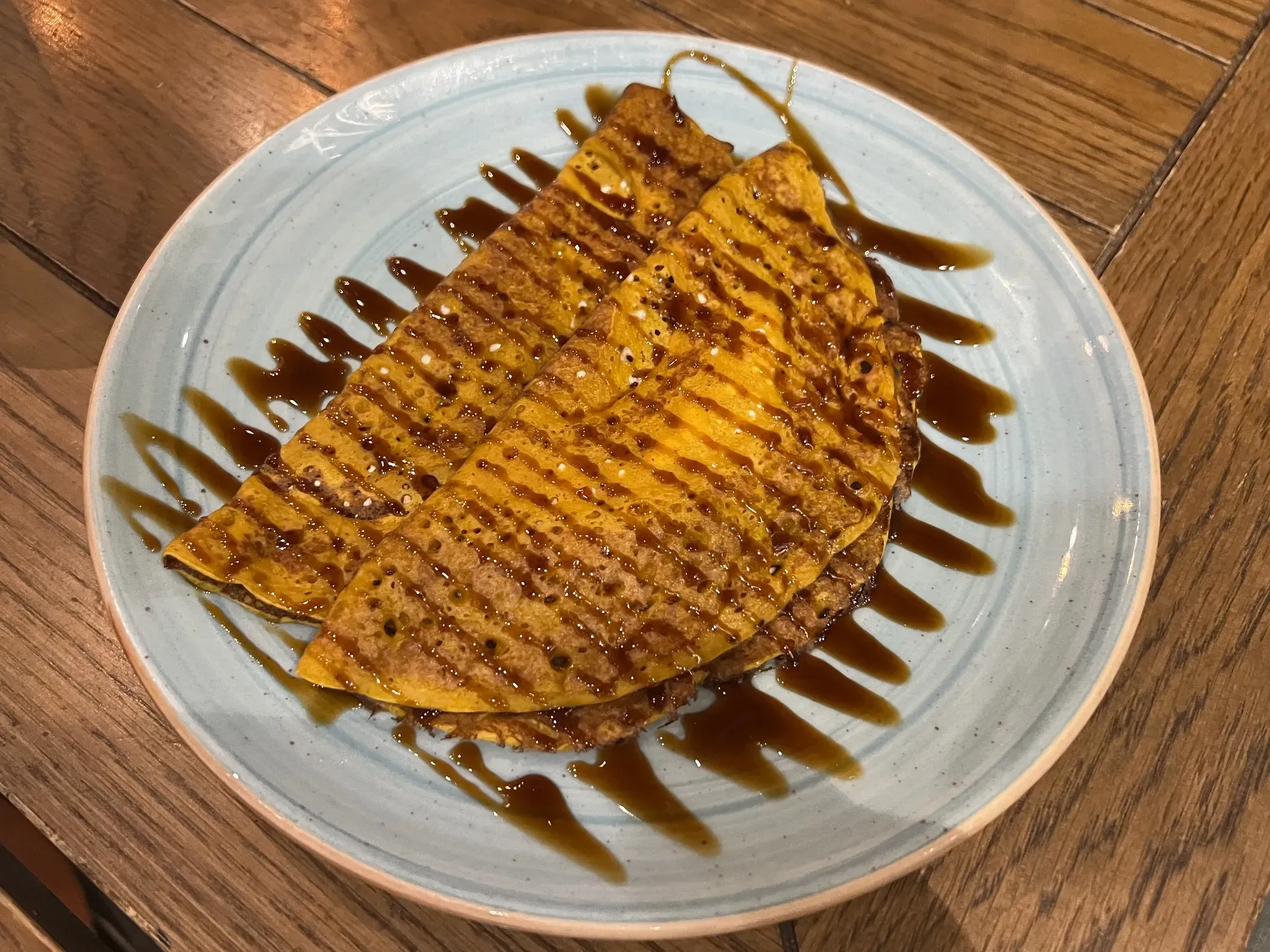
Chebab, also known as Khaleeji pancakes, is a popular dessert in the Gulf region. The dish consists of small, fluffy pancakes that are made with flour, yeast, sugar, and milk. The batter is then left to ferment for a few hours, which gives the pancakes a light and airy texture.
Chebab is believed to have originated in the Levant region, but it has since become a staple dessert in the Gulf region. Regional variations of Chebab can include the addition of other ingredients, such as saffron, rose water, or cardamom, which are added to give the dish a unique flavor. Some regions may also serve Chebab with a drizzle of honey or a side of date syrup.
Regag (Rgaag) / Khubz Rahal
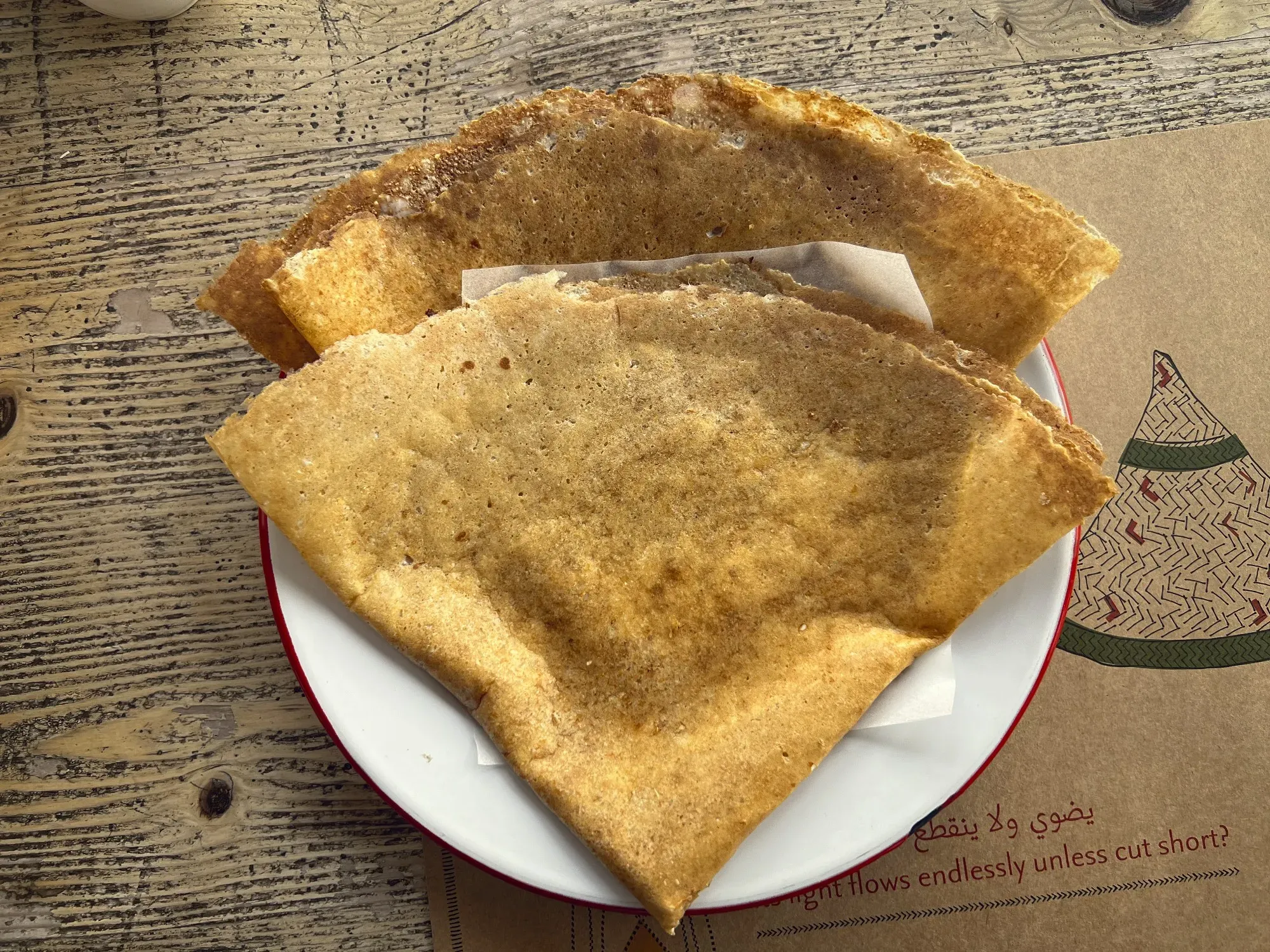
Regag is a thin, crispy flatbread that is a popular street food in the Gulf region. The bread is made from a simple dough of flour, water, and salt, which is rolled out thinly and cooked on a hot griddle. The bread is typically served folded and stuffed with a variety of savory fillings, such as minced meat, cheese, or eggs. Regional variations of Regag can include different fillings and spices, depending on the local cuisine.
Khubz Rahal, also known as "traveler's bread," is also a thin, crispy flatbread from the region. The main difference being it is made with unleavened bread (and is traditionally cooked on a convex griddle or saj). Certain places may serve Regag or Khubz Rahal with a side of spicy sauce or pickles. Both breads can be a delicious and satisfying snack enjoyed by many in the Gulf region.
Khamir (Khameer)
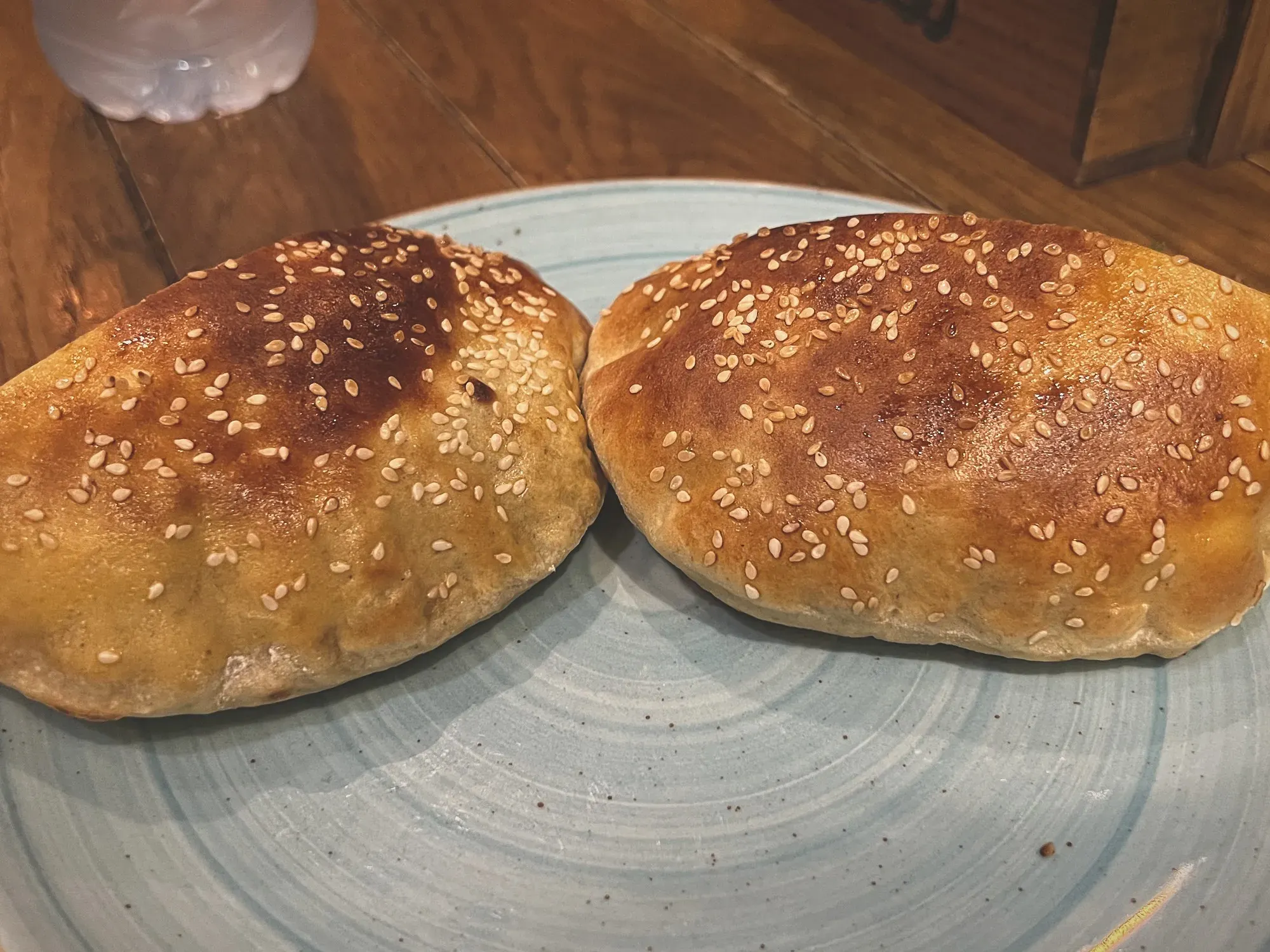
Khamir, also known as Khameer, is a type of traditional bread that is popular in the Gulf region. It is made by mixing flour, water, yeast, and a small amount of sugar to create a dough that is then left to rise for several hours. The bread is then flattened and cooked on a hot griddle until it is puffy and golden brown. Khamir has a soft and slightly chewy texture and a mild, slightly sweet flavor. It is often served with savory dishes such as stews or curries, or with sweet spreads such as honey or jam.
Karak
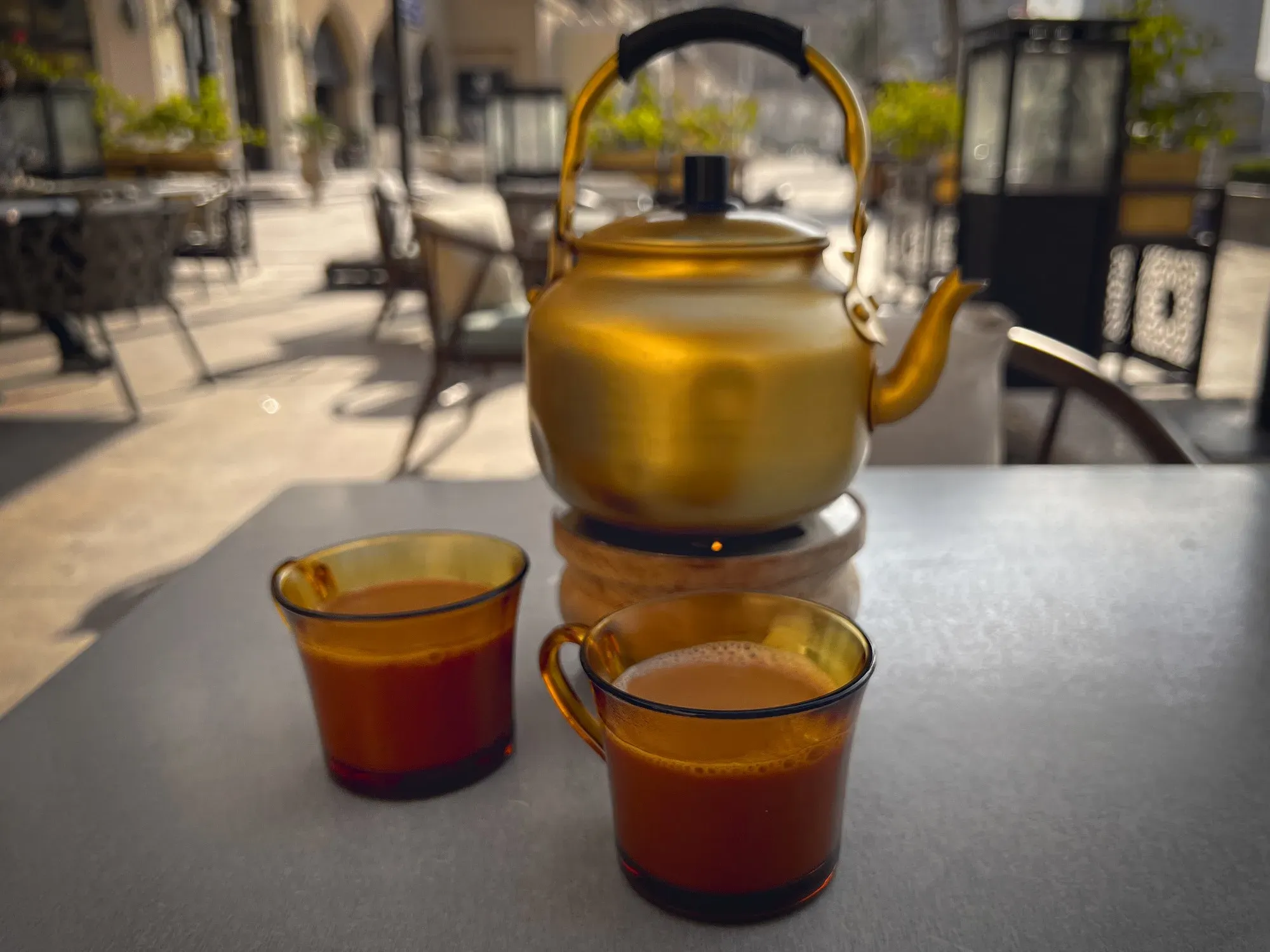
Karak, also known as karak chai, is a popular spiced tea that is commonly consumed in the Gulf region. The tea is a variation of chai, a common beverage in Indian / South Asian cuisine that is typically made with black tea, milk, and spices such as cardamom, cinnamon, and ginger. The tea is made by boiling black tea with a variety of spices, such as cardamom, cinnamon, and ginger. Milk and sugar are then added to the tea to create a creamy and sweet beverage.
Regional variations of Karak can include different spices and levels of sweetness, depending on personal preference and local cuisine. Some regions may add saffron or rose water to the tea, while others may use different types of tea leaves. Karak is a beloved beverage in the Gulf region and is often enjoyed as a morning or afternoon pick-me-up.
Khabees
Khabees is a traditional sweet dish that is popular in the Gulf region. The dish is made by cooking whole wheat flour with butter, sugar, and water until it forms a thick, creamy pudding-like consistency. Regional variations of Khabees can include different additions such as saffron, rose water, or cardamom for flavor, and may also use different types of sweeteners depending on local cuisine.
Al Batheetha
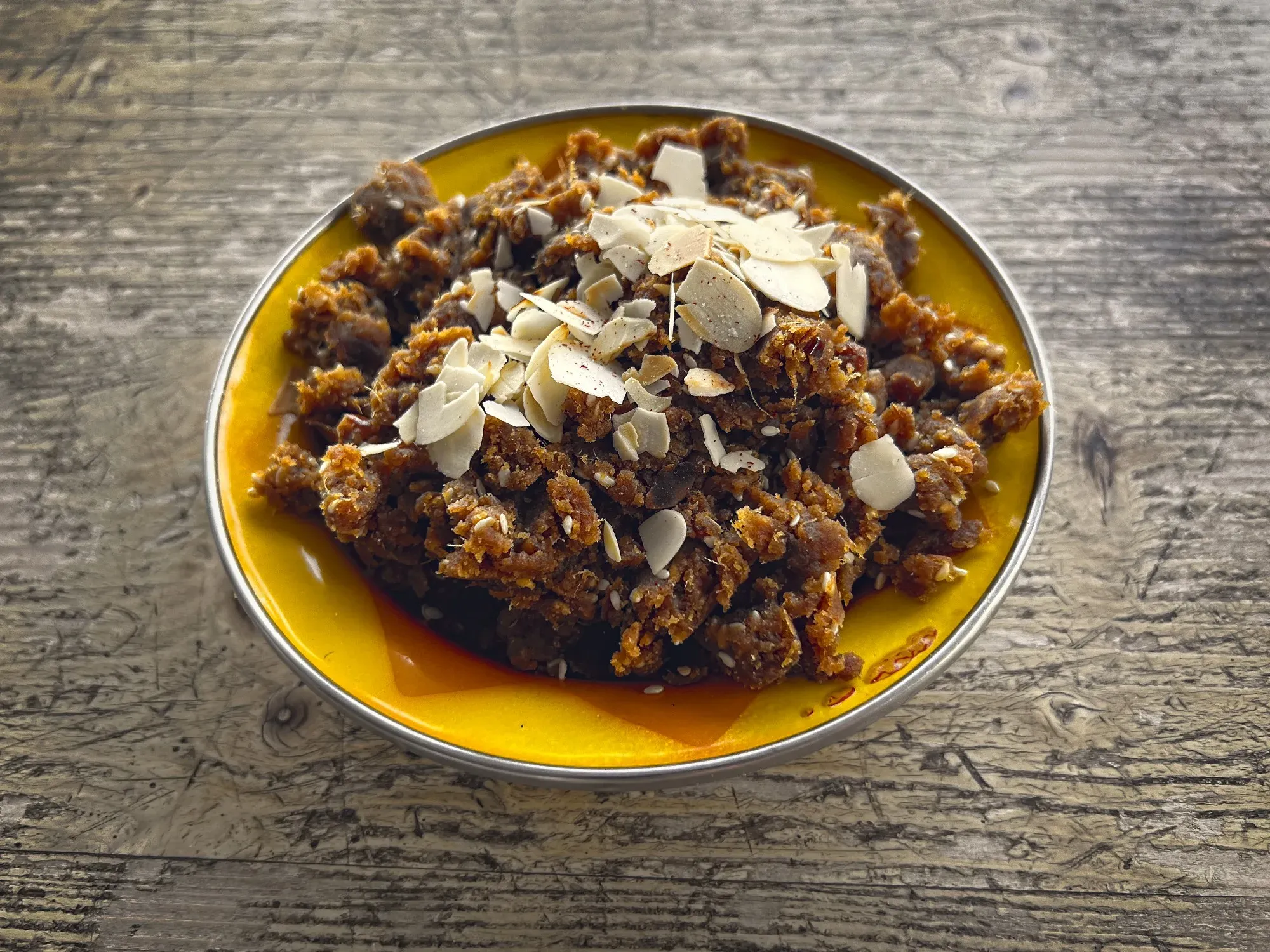
Al Batheetha is a traditional dessert that is popular in the Arabian Gulf region. It is made by combining dates, flour, butter, and sugar to form a dough that is usually then rolled out and cut into small pieces (the above image is a messy rendition).
These pieces are then deep-fried until they are golden brown and crispy. Once fried, the Batheetha is sprinkled with powdered sugar or drizzled with date syrup for added sweetness.
List of Other Things to Try:
- Stuffed camel - A traditional Bedouin dish where a whole camel is stuffed with lamb, chicken, rice, and spices and roasted on an open fire.
- Gahwa - Arabic coffee, commonly consumed in the Middle East.
- Khanfroush - traditional Omani sweet made from cornflakes, dates, honey, and sesame seeds.
- Muttrah Paplou - Omani fusion seafood soup
- Gers Ogaily - spongy perfume cake popular in Kuwaiti cuisine, made with rosewater, saffron, and cardamom.
- Darabeel - pastry from Kuwait that is cookie-like and rolled into cylinders, often served with tea or coffee.
- Daqqus - a tomato-based salsa or dip that can be served with a variety of Kuwaiti dishes.
- Mashuai - Omani dish consisting of roasted kingfish and savory lemon rice.
- Mushaltat - soft flatbread from Oman stuffed with honey, meat, spinach, or cheese.
- Aloo Basheer - Pakistani immigrant dish in Bahrain made of potato patties with a spicy sauce and chickpeas.
- Ogaili - traditional Bahraini dessert made with rice and wheat flour, saffron, and a unique greasing of tahini and sesame.
- Baid Tamat - a Bahraini dish of eggs and tomatoes, pan-fried with aromatic spices and served with Iranian bread and baked beans.
- Mehyawa - Persian-inspired sauce from Bahrain, popular among locals.
- Zenjabari - Bahraini fried bread topped with sugar or cheese.
- Macaroni Taybeen - a popular Bahraini macaroni dish.
- Gaboot (Gabout) - Kuwaiti dumplings made from flour, butter, and milk and served in a rich stew.
- Luban (Frankincense) - A resin that has been used in Middle Eastern cuisine for centuries to add flavor to dishes, particularly in Yemeni cuisine.
- Qabuli - An Omani meat and rice dish made with slow-cooked lamb, fragrant spices, and long-grain rice.
- Sidaf - A medicinal herb native to the highlands of Oman, often used in traditional medicine and as a seasoning in cooking.
- Al Bagla - An Omani breakfast dish made with oiled and dried fava beans, often eaten with bread, eggs, and fresh vegetables.
- Quroos - Small Omani pancakes that are often served with honey or jam as a sweet breakfast treat.
- Sharbat Zafran - A Bahraini drink made with saffron, sugar, and water, often served chilled as a refreshing beverage.
Resources
Restaurant Recommendations
There were so many incredible places to eat in the Gulf countries. The number of restaurants serving food from all over the world was top-notch throughout the region, but especially in the Emirates. This is mostly likely due to the recent explosion in wealth and tourism of these countries, yet the fact remains that restaurants here are consistently of fantastic quality. Here we will call out three restaurants that surprised us in some sense, but you should check out the database to see more great options while in the area.
Al Khayma Heritage Restaurant is a cultural-themed tourist restaurant in the Al Fahidi Historical neighborhood in Dubai. We were apprehensive at first, as experiences like this have a wide range of authenticity and quality, but thankfully Al Khayma is a worthwhile rendition. The food was incredible, the atmosphere was phenomenal, and the service could not have been better. It is not the cheapest and nothing in Dubai is truly authentic, but it is straight up a great restaurant and gets a strong recommendation.
Gahwetna is a popular, chic restaurant in the Pearl area of Qatar. The pleasant decorations and quality food made this a great spot for a meal. The dishes were a little small and too pretty almost, but we had a good time for sure.
Al Shemam is one of the many shopper and tourist-grabbing restaurants around the Souq al Kuwait. While it may look at first like a tourist trap, which it kind of is, the food is wonderful and the portions made my stomach double in size. Remember, the primary difference between a tourist trap and a popular restaurant, is just how good the food is.
To see an extensive list of restaurant recommendations in the UAE, Qatar, Kuwait, Bahrain, or Oman check out the Restaurants page to see a map of our top recommendations for Asia as well as the database with details on restaurants from all around the world.



